 W
WThe history of theatre charts the development of theatre over the past 2,500 years. While performative elements are present in every society, it is customary to acknowledge a distinction between theatre as an art form and entertainment and theatrical or performative elements in other activities. The history of theatre is primarily concerned with the origin and subsequent development of the theatre as an autonomous activity. Since classical Athens in the 6th century BC, vibrant traditions of theatre have flourished in cultures across the world.
 W
WThe Accession Day tilts were a series of elaborate festivities held annually at the court of Elizabeth I of England to celebrate her Accession Day, 17 November, also known as Queen's Day. The tilts combined theatrical elements with jousting, in which Elizabeth's courtiers competed to outdo each other in allegorical armour and costume, poetry, and pageantry to exalt the queen and her realm of England.
 W
WAntitheatricality is any form of opposition or hostility to theater. Such opposition is as old as theater itself, suggesting a deep-seated ambivalence in human nature about the dramatic arts. Jonas Barish's 1981 book, The Antitheatrical Prejudice, was, according to one of his Berkeley colleagues, immediately recognized as having given intellectual and historical definition to a phenomenon which up to that point had been only dimly observed and understood. The book earned the American Theater Association's Barnard Hewitt Award for outstanding research in theater history. Barish and some more recent commentators treat the anti-theatrical, not as an enemy to be overcome, but rather as an inevitable and valuable part of the theatrical dynamic.
 W
WAn auditorium is a room built to enable an audience to hear and watch performances. For movie theatres, the number of auditoria is expressed as the number of screens. Auditoria can be found in entertainment venues, community halls, and theaters, and may be used for rehearsal, presentation, performing arts productions, or as a learning space.
 W
WBoy player refers to children who performed in Medieval and English Renaissance playing companies. Some boy players worked for the adult companies and performed the female roles as women did not perform on the English stage in this period. Others worked for children's companies in which all roles, not just the female ones, were played by boys.
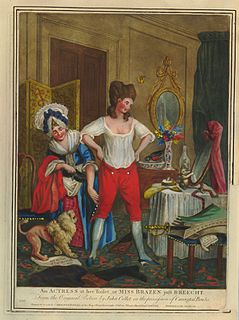 W
WA breeches role is one in which an actress appears in male clothing. Breeches, tight-fitting knee-length pants, were the standard male garment at the time these roles were introduced. The theatrical term travesti covers both this sort of cross-dressing and also that of male actors dressing as female characters. Both are part of the long history of cross-dressing in music and opera and later in film and television.
 W
WA burlesque is a literary, dramatic or musical work intended to cause laughter by caricaturing the manner or spirit of serious works, or by ludicrous treatment of their subjects. The word derives from the Italian burlesco, which, in turn, is derived from the Italian burla – a joke, ridicule or mockery.
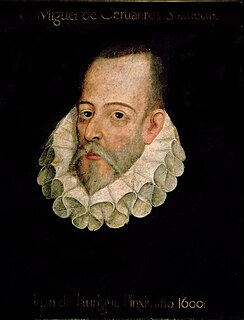 W
WMiguel de Cervantes Saavedra was a Spanish writer widely regarded as the greatest writer in the Spanish language, and one of the world's pre-eminent novelists. He is best known for his novel Don Quixote, a work often cited as both the first modern novel and one of the pinnacles of world literature.
 W
WCommedia dell'arte was an early form of professional theatre, originating from Italy, that was popular in Europe from the 16th to the 18th century. Commedia dell'arte was formerly called Italian comedy in English and is also known as commedia alla maschera, commedia improvviso, and commedia dell'arte all'improvviso. Commedia is a form of theatre characterized by masked "types" which began in Italy in the 16th century and was responsible for the advent of actresses and improvised performances based on sketches or scenarios. A commedia, such as The Tooth Puller, is both scripted and improvised. Characters' entrances and exits are scripted. A special characteristic of commedia dell'arte are the lazzi. A lazzo is a joke or "something foolish or witty", usually well known to the performers and to some extent a scripted routine. Another characteristic of commedia dell'arte is pantomime, which is mostly used by the character Arlecchino (Harlequin).
 W
WJean-Charles Deburau was an important French mime, the son and successor of the legendary Jean-Gaspard Deburau, who was immortalized as Baptiste the Pierrot in Marcel Carné's film Children of Paradise (1945). After his father's death in 1846, Charles kept alive his pantomimic legacy, first in Paris, at the Théâtre des Funambules, and then, beginning in the late 1850s, at theaters in Bordeaux and Marseille. He is routinely credited with founding a southern "school" of pantomime; indeed, he served as tutor to the Marseille mime Louis Rouffe, who, in turn, gave instruction to Séverin Cafferra, known simply as "Séverin". But their art was nourished by the work of other mimes, particularly of Charles's rival, Paul Legrand, and by earlier developments in nineteenth-century pantomime that were alien to the Deburaux' traditions.
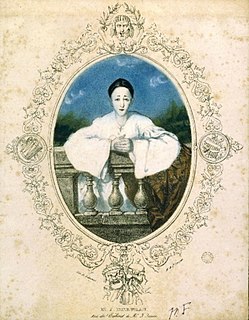 W
WJean-Gaspard Deburau, sometimes erroneously called Debureau, was a celebrated Bohemian-French mime. He performed from 1816 to the year of his death at the Théâtre des Funambules, which was immortalized in Marcel Carné's poetic-realist film Children of Paradise (1945); Deburau appears in the film as a major character. His most famous pantomimic creation was Pierrot—a character that served as the godfather of all the Pierrots of Romantic, Decadent, Symbolist, and early Modernist theater and art.
 W
WDevelopment of musical theatre refers to the historical development of theatrical performance combined with music that culminated in the integrated form of modern musical theatre that combines songs, spoken dialogue, acting and dance. Although music has been a part of dramatic presentations since ancient times, modern Western musical theatre developed from several lines of antecedents that evolved over several centuries through the 18th century when the Ballad Opera and pantomime emerged in England and its colonies as the most popular forms of musical entertainment.
 W
WKungliga Dramatiska Teaterns Elevskola, also known as Dramatens elevskola, was the acting school of Sweden's national stage, The Royal Dramatic Theatre, and for many years (1787–1964) seen as the foremost theatre school and drama education for Swedish stage actors. It was established in 1787 by the theatre and art loving King Gustav III and was for many years under the protection of the Swedish royal family.
 W
WA droll is a short comical sketch of a type that originated during the Puritan Interregnum in England. With the closure of the theatres, actors were left without any way of plying their art. Borrowing scenes from well-known plays of the Elizabethan theatre, they added dancing and other entertainments and performed these, sometimes illegally, to make money. Along with the popularity of the source play, material for drolls was generally chosen for physical humor or for wit.
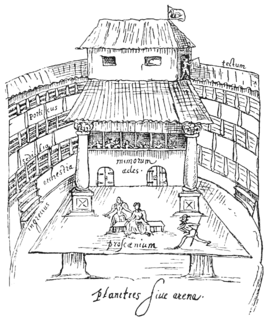 W
WEnglish Renaissance theatre, also known as Renaissance English theatre and Elizabethan theatre, refers to the theatre of England between 1558 and 1642.
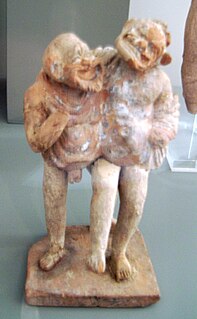 W
WFabula palliata is a genre of Roman drama that consists largely of Romanized versions of Greek plays. Palliata comes from pallium, the Latin word for a Greek-style cloak. It is possible that the term fabula palliata indicates that the actors who performed wore such cloaks. Another possibility is that the fabula itself is metaphorically "cloaked" in a Greek style. As in all Roman drama, the actors wore masks that easily identified which of the stock characters they represented.
 W
WFrench history has been the basis of plays in the English-speaking theatre since the English Renaissance theatre.
 W
WThe group theatre of Kolkata refers to a tradition in theatres in the Indian city Kolkata, which developed in the 1940s as an alternative to entertainment-oriented theatres. As opposed to commercial theatres, group theatre is "a theatre that is not professional or commercial", characterized by its tendency for experimentation in theme, content and production, and its aim of using the proscenium stage to highlight social messages, rather than having primarily making-money objectives.
 W
WHarlequinade is a British comic theatrical genre, defined by the Oxford English Dictionary as "that part of a pantomime in which the harlequin and clown play the principal parts". It developed in England between the 17th and mid-19th centuries. It was originally a slapstick adaptation or variant of the Commedia dell'arte, which originated in Italy and reached its apogee there in the 16th and 17th centuries. The story of the Harlequinade revolves around a comic incident in the lives of its five main characters: Harlequin, who loves Columbine; Columbine's greedy and foolish father Pantaloon, who tries to separate the lovers in league with the mischievous Clown; and the servant, Pierrot, usually involving chaotic chase scenes with a bumbling policeman.
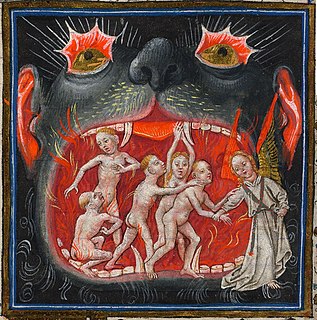 W
WHellmouth, or the jaws of Hell, is the entrance to Hell envisaged as the gaping mouth of a huge monster, an image which first appears in Anglo-Saxon art, and then spread all over Europe. It remained very common in depictions of the Last Judgment and Harrowing of Hell until the end of the Middle Ages, and is still sometimes used during the Renaissance and after. It enjoyed something of a revival in polemical popular prints after the Protestant Reformation, when figures from the opposite side would be shown disappearing into the mouth. A notable late appearance is in the two versions of a painting by El Greco of about 1578. Political cartoons still showed Napoleon leading his troops into one.
 W
WOkuni was a Japanese shrine maiden who is believed to have invented the theatrical art form of kabuki. She is thought to have begun performing her new art style of "kabuki" theatre in the dry riverbed of the Kamo River in Kyoto. Okuni's troupe quickly gained immense popularity, and were known for their performers, who were often lower-class women Okuni had recruited to act in her all-female theater group.
 W
WKabuki (歌舞伎) is a classical form of Japanese dance-drama. Kabuki theatre is known for its heavily-stylised performances, the often-glamorous costumes worn by performers, and for the elaborate kumadori make-up worn by some of its performers.
 W
WKaragiozis or Karaghiozis is a shadow puppet and fictional character of Greek folklore, is an offspring of the Turkish shadow play Karagöz and Hacivat. He is the main character of the tales narrated in the Turkish and Greek shadow-puppet theatre.
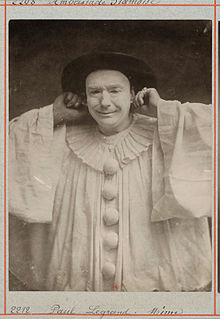 W
WPaul Legrand, born Charles-Dominique-Martin Legrand, was a highly regarded and influential French mime who turned the Pierrot of his predecessor, Jean-Gaspard Deburau, into the tearful, sentimental character that is most familiar to post-19th-century admirers of the figure. He was the first of the Parisian mimes of his era to take his art abroad—to London, in late 1847, for a holiday engagement at the Adelphi—and, after triumphs in mid-century Paris at the Folies-Nouvelles, he entertained audiences in Cairo and Rio de Janeiro. In the last years of the century, he was a member of the Cercle Funambulesque, a theatrical society that promoted work, especially pantomime, inspired by the Commedia dell'Arte, past and present. The year of his death coincided with the last year of the Cercle's existence.
 W
WHilda Maria Lund was a Swedish ballerina at the Royal Swedish Ballet at the Royal Swedish Opera in Stockholm.
 W
WMedieval theatre encompasses theatrical performance in the period between the fall of the Western Roman Empire in the 5th century and the beginning of the Renaissance in approximately the 15th century. The category of "medieval theatre" is vast, covering dramatic performance in Europe over a thousand-year period. A broad spectrum of genres needs to be considered, including mystery plays, morality plays, farces and masques. The themes were almost always religious. The most famous examples are the English cycle dramas, the York Mystery Plays, the Chester Mystery Plays, the Wakefield Mystery Plays, and the N-Town Plays, as well as the morality play known as Everyman. One of the first surviving secular plays in English is The Interlude of the Student and the Girl.
 W
WMemorial reconstruction is the hypothesis that the scripts of some 17th century plays were written down from memory by actors who had played parts in them, and that those transcriptions were published. The theory is suggested as an explanation for the so-called "bad quarto" versions of plays, in which the texts differ dramatically from later published versions, or appear to be corrupted or confused.
 W
WMusical theatre is a form of theatrical performance that combines songs, spoken dialogue, acting and dance. The story and emotional content of a musical – humor, pathos, love, anger – are communicated through words, music, movement and technical aspects of the entertainment as an integrated whole. Although musical theatre overlaps with other theatrical forms like opera and dance, it may be distinguished by the equal importance given to the music as compared with the dialogue, movement and other elements. Since the early 20th century, musical theatre stage works have generally been called, simply, musicals.
 W
WNōgaku (能楽) is one of the traditional styles of Japanese theater. It is composed of the lyric drama noh, and the comic theater kyōgen (狂言). Traditionally, both types of theatre are performed together, the kyōgen being interposed between the pieces of noh during a day of performances.
 W
WNoh is a major form of classical Japanese dance-drama that has been performed since the 14th century. Developed by Kan'ami and his son Zeami, it is the oldest major theatre art that is still regularly performed today. Although the terms Noh and nōgaku are sometimes used interchangeably, nōgaku encompasses both Noh and kyōgen. Traditionally, a full nōgaku program includes five Noh plays with comedic kyōgen plays in between; an abbreviated program of two Noh plays with one kyōgen piece has become common today. Optionally, an okina play may be presented in the very beginning of nōgaku presentation.
 W
WL'œil du prince is a French expression popularized by Nicola Sabbatini (1574–1654), an Italian stage designer and architect of the Renaissance in his famous treatise published in 1638. It is an imaginary point in the audience of a theatre, located in its central axis, approximately 0.6 m above the stage, and at a distance equal to the stage's width. In most theaters it corresponds more or less to the seventh row of seats. Sabbatini, in a chapter in his book, describes ‘How to Place the Prince’s Seat’, where "all the objects in the scene appear better... than from any other place". It is considered the best place and the most coveted one in the audience, which was reserved for the nobility. Due to the importance of these spectators, of course, many theater shows had their main movements and happenings designed in order to attract the attention of the prince's eye.
 W
WThe Old Price Riots of 1809 were caused by rising prices at the new Theatre at Covent Garden, London, after the previous one had been destroyed by fire. Covent Garden was one of two "patent" theatres in London in the nineteenth century, along with Drury Lane. When Drury Lane was burned down, Covent Garden became the premiere theatre in that time. The riots lasted three months, and ended with John Philip Kemble, the manager of the theatre, being forced to make a public apology. It was said that as many as 20 people died and many more wounded during this event.
 W
WPedrolino is a primo zanni, or comic servant, of the Commedia dell'Arte; the name is a hypocorism of Pedro (Peter), via the suffix -lino. The character made its first appearance in the last quarter of the 16th century, apparently as the invention of the actor with whom the role was to be long identified, Giovanni Pellesini. Contemporary illustrations suggest that his white blouse and trousers constituted "a variant of the typical zanni suit", and his Bergamasque dialect marked him as a member of the "low" rustic class. But if his costume and social station were without distinction, his dramatic role was certainly not: as a multifaceted "first" zanni, his character was—and still is—rich in comic incongruities.
 W
WA periaktos is a device used for displaying and rapidly changing theatre scenes. It was first mentioned in Vitruvius's book on architecture, De architectura, but its most intense use began in Renaissance theatre, as a result of the work of important theatrical designers, such as Nicola Sabbatini (1574–1654). It consists of a revolving solid equilateral triangular prism made of wood. On each of its three faces, a different scene is painted, so that, by quickly revolving the periaktos, another face can appear to the audience. Other solid polygons can be used, such as cubes, but triangular prisms offer the best combination of simplicity, speed and number of scenes per device.
 W
WPhantasmagoria was a form of horror theatre that used one or more magic lanterns to project frightening images such as skeletons, demons, and ghosts onto walls, smoke, or semi-transparent screens, typically using rear projection to keep the lantern out of sight. Mobile or portable projectors were used, allowing the projected image to move and change size on the screen, and multiple projecting devices allowed for quick switching of different images. In many shows the use of spooky decoration, total darkness, (auto-)suggestive verbal presentation, and sound effects were also key elements. Some shows added a variety of sensory stimulation, including smells and electric shocks. Such elements as required fasting, fatigue and drugs have been mentioned as methods of making sure spectators would be more convinced of what they saw. The shows started under the guise of actual séances in Germany in the late 18th century, and gained popularity through most of Europe throughout the 19th century.
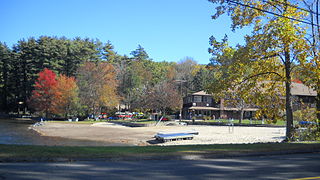 W
WPine Brook Country Club began when Benjamin Plotkin purchased Pinewood Lake and the surrounding countryside on Mischa Hill in the historic village of Nichols, Connecticut. Plotkin built an auditorium with a revolving stage and forty rustic cabins and incorporated as the Pine Brook Country Club in 1930. Plotkin's dream was to market the rural lakeside club as a summer resort for people to stay and enjoy theatrical productions. The Club remained in existence until major fighting broke out in Europe in the mid-1940s and was reorganized as a private lake association in 1944.Group Theatre
 W
WPinewood Lake is a natural lake located northwest of 330 feet (100 m) tall Mischa Hill in the Nichols Farms Historic District section of Trumbull, Connecticut.
 W
WA bad quarto, in Shakespearean scholarship, is a quarto-sized printed edition of one of Shakespeare's plays that is considered to be unauthorised, and is theorised to have been pirated from a theatrical performance without permission by someone in the audience writing it down as it was spoken or, alternatively, written down later from memory by an actor or group of actors in the cast – the latter process has been termed "memorial reconstruction". Since the quarto derives from a performance, hence lacks a direct link to the author's original manuscript, the text would be expected to be "bad", i.e. to contain corruptions, abridgements and paraphrasings.
 W
WThe Royal Entry, also known by various names, including Triumphal Entry, Joyous Entry, consisted of the ceremonies and festivities accompanying a formal entry by a ruler or his representative into a city in the Middle Ages and Early Modern Period in Europe. The entry centred on a procession carrying the entering prince into the city, where he was greeted and paid appropriate homage by the civic authorities. A feast and other celebrations would follow.
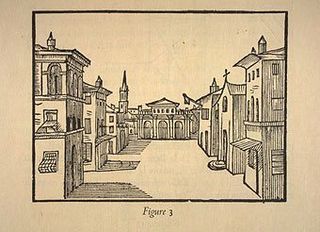 W
WNicola Sabbatini, also known as Niccolò Sabbatini or Nicola Sabbattini, was an Italian architect of the Baroque.
 W
WThe Theatre of Van Campen was a theatre located at Keizersgracht 384 in Amsterdam. It was the first city theatre, based on the Teatro Olimpico in Italy. The site is now occupied by a "The Dylon" hotel.
 W
WThe Scottish Community Drama Association (SCDA) is an association of amateur dramatic clubs throughout Scotland. It was first founded in 1926. Amateur theatre companies in Scotland have generally presented repertoire in English, Lowland Scots and, more occasionally, Scottish Gaelic.
 W
WIn the theatre of ancient Greece, the skene was the structure at the back of a stage. The word skene means "tent" or "hut", and it is thought that the original structure for these purposes was a tent or light building of wood and was a temporary structure. It was initially a very light structure or just cloth hanging from a rope, but over the course of time the skene underwent fundamental changes. First, it became a permanent building, whose roof could sometimes be used to make speeches, and as time passed it was raised up from the level of the orchestra, creating a proskenion, or "space in front of the skene". The facade of the proskenion was behind the orchestra and provided a space for supporting stage scenery.
 W
WThe Škofja Loka Passion Play is the oldest play in Slovene. In its current form, it was a penitential Passion procession. It was written on the basis of an older tradition in 1715, with minor corrections until 1727, by Father Romuald, a Capuchin monk who lived for a period in the Škofja Loka Capuchin monastery in the town of Škofja Loka. The passion presents Biblical stories, particularly from the life of Jesus. It consists of 869 verses, written in the old Škofja Loka dialect. They are divided into 13 tableaux. It belongs to the Baroque period and represents the oldest preserved director's book in the world. The play's manuscript is kept by the Škofja Loka monastery.
 W
WThe architectural form of theatre in Rome has been linked to later, more well-known examples from the 1st century B.C.E. to the 3rd Century C.E. The Theatre of ancient Rome referred to as a period of time in which theatrical practice and performance took place in Rome has been linked back even further to the 4th century B.C.E., following the state’s transition from monarchy to republic. Theatre during this era is generally separated into genres of tragedy and comedy, which are represented by a particular style of architecture and stage play, and conveyed to an audience purely as a form of entertainment and control. When it came to the audience, Romans favored entertainment and performance over tragedy and drama, displaying a more modern form of theatre that is still used in contemporary times. 'Spectacle' became an essential part of an everyday Romans expectations when it came to Theatre. Some works by Plautus, Terence, and Seneca the Younger that survive to this day, highlight the different aspects of Roman society and culture at the time, including advancements in Roman literature and theatre.Theatre during this period of time would come to represent an important aspect of Roman society during the republican and imperial periods of Rome.
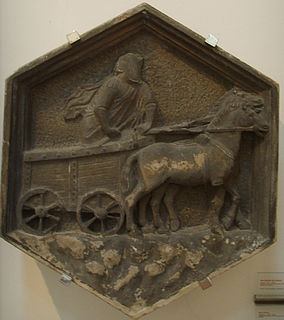 W
WThespis of Icaria, according to certain Ancient Greek sources and especially Aristotle, was the first person ever to appear on stage as an actor playing a character in a play. In other sources, he is said to have introduced the first principal actor in addition to the chorus.
 W
WTragedy is a form of drama based on human suffering and, mainly, the terrible or sorrowful events that befall a main character. Traditionally, the intention of tragedy is to invoke an accompanying catharsis, or a "pain [that] awakens pleasure", for the audience. While many cultures have developed forms that provoke this paradoxical response, the term tragedy often refers to a specific tradition of drama that has played a unique and important role historically in the self-definition of Western civilization. That tradition has been multiple and discontinuous, yet the term has often been used to invoke a powerful effect of cultural identity and historical continuity—"the Greeks and the Elizabethans, in one cultural form; Hellenes and Christians, in a common activity," as Raymond Williams puts it.
 W
WTragicomedy is a literary genre that blends aspects of both tragic and comic forms. Most often seen in dramatic literature, the term can describe either a tragic play which contains enough comic elements to lighten the overall mood or a serious play with a happy ending. Tragicomedy, as its name implies, invokes the intended response of both the tragedy and the comedy in the audience, the former being a genre based on human suffering that invokes an accompanying catharsis and the latter being a genre intended to be humorous or amusing by inducing laughter.
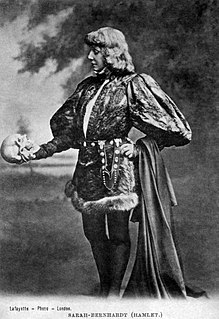 W
WTravesti is a theatrical term referring to the portrayal of a character in an opera, play, or ballet by a performer of the opposite sex.
 W
WTsar Maximilian is a well-known and complex Russian folk theatre, having enjoyed wide popularity throughout European Russia from the 18th to the early 20th century.
 W
WThe University of Bristol Theatre Collection was founded in 1951 to serve the University of Bristol Department of Drama. It is now one of the world’s largest archives of British Theatre History. It is a fully accredited Archive and Museum and home to the Live Art Archive.
 W
WVictorian burlesque, sometimes known as travesty or extravaganza, is a genre of theatrical entertainment that was popular in Victorian England and in the New York theatre of the mid-19th century. It is a form of parody in which a well-known opera or piece of classical theatre or ballet is adapted into a broad comic play, usually a musical play, usually risqué in style, mocking the theatrical and musical conventions and styles of the original work, and often quoting or pastiching text or music from the original work. Victorian burlesque is one of several forms of burlesque.
 W
WThe Walnut Street Theatre, founded in 1809 at 825 Walnut Street, on the corner of S. 9th Street in the Washington Square West neighborhood of Philadelphia, is the oldest continuously-operating theatre in the English-speaking world and the oldest theatre in the United States. The venue is operated by the Walnut Street Theatre Company, a non-profit organization, and has three stages: the Mainstage, for the company's primary and larger productions, the Independence Studio on 3, a studio located on the building's third floor for smaller productions, and the Studio 5 on the fifth floor, which is rented out for independent productions. In May 2019, the Walnut Street Theatre announced a major expansion, to begin in 2020.